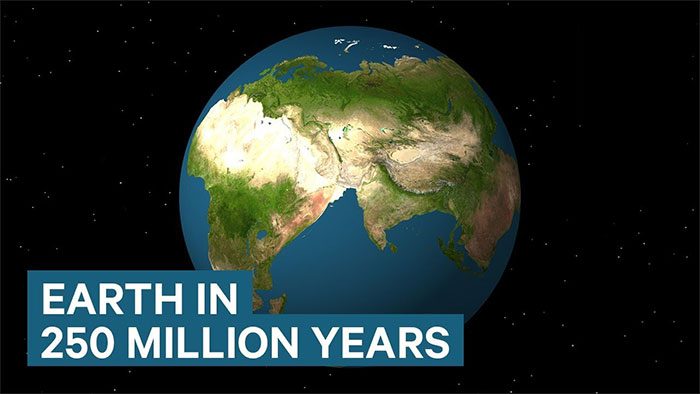Tech Insider’s graphics show that continents will merge into a single landmass within the next 250 million years.
Predictions of continental drift over the next 250 million years. (Video: Tech Insider)
According to Tech Insider, the graphics are based on predictions by Chris Scotese, a professor in the Department of Earth and Planetary Sciences at Northwestern University. In the graphics, the continents gradually shrink and morph over time. First, Australia drifts northward while Africa moves closer to Europe. East Asia begins to shift westward, and Antarctica floats northward towards South Asia and the eastern coast of Africa. Eventually, North America and Western Europe merge over the Atlantic Ocean. In 250 million years, the current continents will be nearly unrecognizable amidst a vast landmass. On the opposite side of the Earth lies a gigantic ocean.
This is not the first time that nearly all land on Earth has concentrated into a supercontinent. The last occurrence of this process was during the early Permian period, approximately 273 – 299 million years ago, according to the Encyclopedia Britannica. This supercontinent was named Pangaea, surrounded by a vast ocean known as Panthalassa. Pangaea began to break apart around 200 million years ago, eventually forming the continents and oceans as we know them today. The continents move due to heat from radioactive processes within the Earth, causing the planet’s crust (composed of 15 – 20 tectonic plates floating on molten rock in the mantle) to shift.

The future supercontinent is difficult to assess as it does not display tectonic plate boundaries.
Robert Butler, a professor of tectonics, geology, and geophysics at the University of Aberdeen in Scotland, stated that the graphics of the future supercontinent are challenging to evaluate because they do not represent tectonic plate boundaries. According to him, predictions of continental drift in the future rely on using past data about the movement of continents.
“The results of the predictions are quite certain because the relative movement speed of tectonic plates is very slow and not chaotic. We can track the evolution of tectonic plates very accurately over the past 200 million years because the data on the relative movement of tectonic plates is accompanied by data on the expansion of the ocean floor in today’s oceans. Supercontinents will appear and disappear in cycles lasting at least 3 billion years,” Butler said.


















































